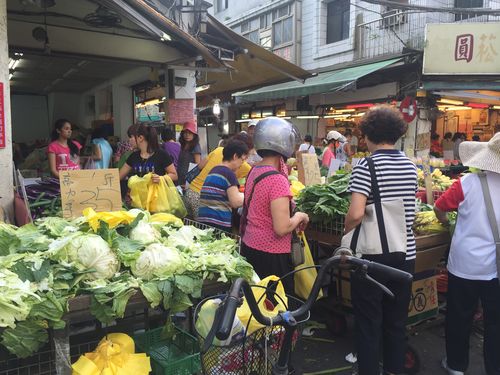Taiwan's consumer price index (CPI) witnessed its highest year-on-year growth in seven months, surpassing 2 percent due to increased food and fuel costs, as reported by the Directorate General of Budget, Accounting and Statistics (DGBAS) on Wednesday.
DGBAS data revealed that the CPI in August rose by 2.52 percent compared to the same month the previous year, notably exceeding the central bank's 2 percent alert threshold. This marked the first time the 2 percent mark was crossed in three months, following 1.75 percent in June and 1.88 percent in July. Furthermore, August's CPI growth was the highest since January, when inflation reached 3.05 percent.
The year-on-year growth in the core CPI, which excludes fruit, vegetables, and energy, also exceeded 2 percent, standing at 2.56 percent in August, according to the DGBAS.
On a month-on-month basis, the CPI in August increased by 0.55 percent. After seasonal adjustments, the index still showed a rise of 0.18 percent, according to the DGBAS.
In the first eight months of this year, CPI growth reached 2.29 percent, with core CPI growth at 2.66 percent, the DGBAS added.
DGBAS specialist Tsao Chih-hung explained that heavy rainfall due to a typhoon raised vegetable prices in August, while a surge in international crude oil prices led to higher fuel prices during the month.
Food prices in August increased by 3.46 percent year-on-year, with vegetables, meat, frozen foods, grains, and fishery foods rising by 13.33 percent, 5.79 percent, 4.65 percent, 4.49 percent, and 3.18 percent, respectively. The cost of dining out also grew by 4.26 percent, according to the DGBAS.
However, fruit prices fell by 8.28 percent year-on-year in August due to a relatively high comparison base from the same period the previous year, which capped overall food price growth.
Transportation and communications expenses grew by 1.68 percent year-on-year in August, with fuel prices soaring by 4.32 percent in line with crude oil price hikes, the DGBAS added.
The DGBAS noted that domestic consumption remained strong in the post-COVID-19 era, pushing up entertainment and education expenses by 3.62 percent. This growth also reflected rising demand for travel during the summer vacation.
While some businesses have seen a recovery, others continue to struggle, highlighting the complexity of the situation following the tragic event. The DGBAS also mentioned that the cost of a basket of 17 government-monitored household necessities increased by 4.20 percent from a year earlier in June.
Looking ahead, the DGBAS suggested that the CPI is likely to remain above 2 percent due to a recent typhoon but noted that entertainment and education costs could decrease following the end of the summer vacation.
On a different note, the producer price index (PPI) for August fell by 0.06 percent year-on-year due to a decrease in the cost of oil, coal, chemical materials, base metals, and drugs during the month. However, this decline was partially offset by increases in electricity rates, more expensive agricultural products, and a weakening Taiwan dollar, according to the DGBAS.
In the first eight months of 2023, Taiwan's PPI fell by 0.68 percent year-on-year. As major central banks globally continue to tighten monetary policies, raw material prices have shown signs of decreasing, leading to a decline in Taiwan's PPI for five consecutive months up to August, helping the country counter imported inflation, explained Tsao. In mid-August, the DGBAS forecasted that local CPI would grow by 2.14 percent from the previous year in 2023, with inflationary pressures expected to ease in the fourth quarter, projecting a growth rate of 1.93 percent.



